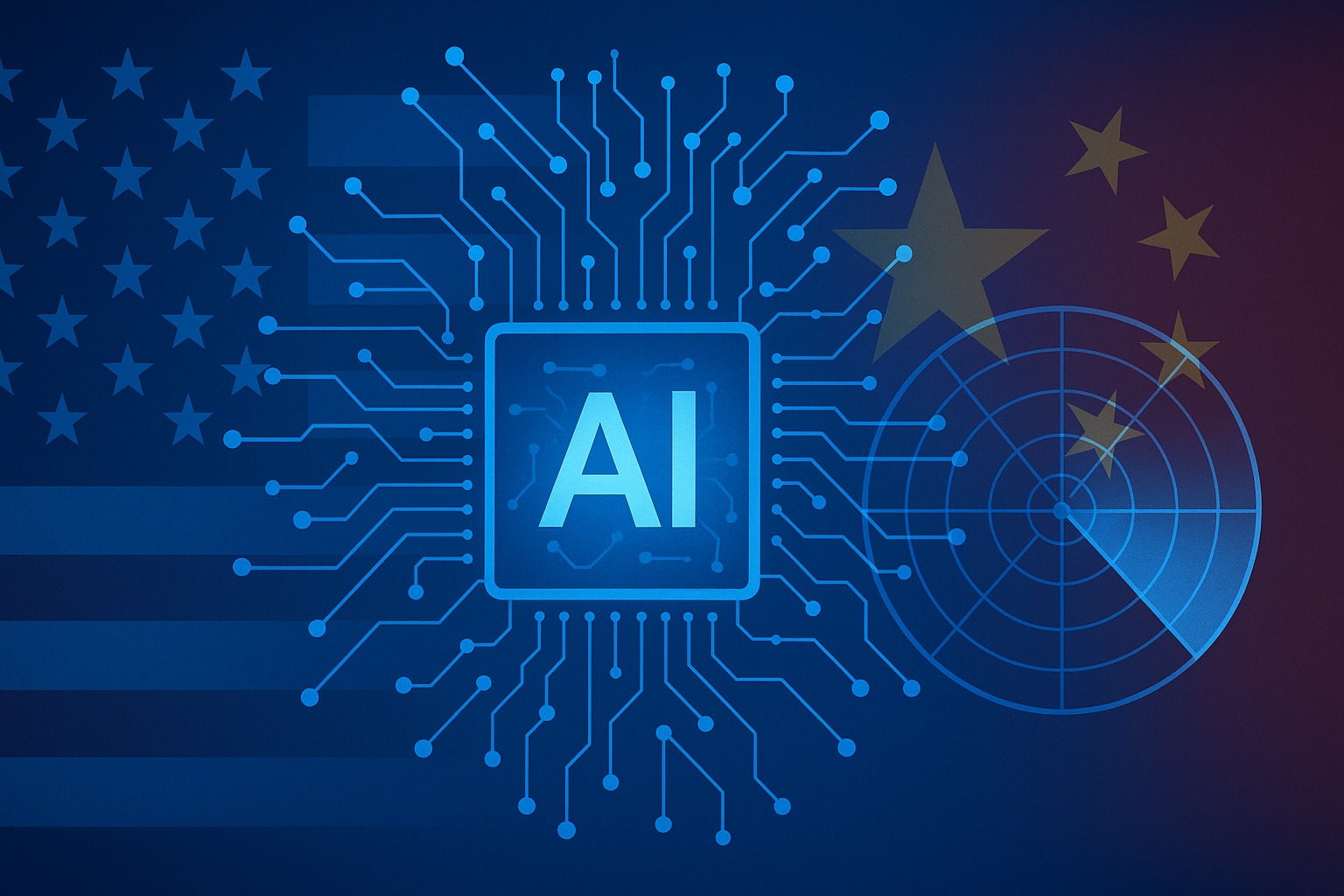The competition for artificial intelligence leadership has entered a new phase. What began as a race for commercial advantage between the United States and China is evolving into something broader: the pursuit of Artificial General Intelligence (AGI) and, eventually, Artificial Superintelligence (ASI). Both nations now view this as a matter of national security, not just innovation policy.
AGI represents the inflection point where machines match or exceed human-level reasoning across domains. ASI extends that trajectory into systems that self-improve beyond human comprehension. These terms once belonged to speculative research; now they shape defense planning, industrial policy, and cross-border regulation.
From Industrial to Cognitive Deterrence
The Cold War established deterrence through visible weapons and measurable capabilities. The AI era introduces a subtler equilibrium, cognitive deterrence, where superiority is measured by speed of decision-making, predictive precision, and autonomy of response.
In this environment, dominance is not about having more data or compute, but about controlling the feedback loops that turn intelligence into action. Military and economic power both hinge on who can integrate human and machine cognition most effectively.
This shift explains why both Washington and Beijing now treat AI infrastructure, from chips and data centers to training algorithms, as strategic assets comparable to missile systems or satellite networks.
How AGI Redefines Power and Security
AGI has the potential to compress decades of R&D into months, upend workforce economics, and reshape information warfare. In defense, it transforms command structures from hierarchical to algorithmic, with autonomous systems making battlefield decisions faster than human oversight can process.
-
United States: Focused on private-sector leadership and modular integration with defense systems. Initiatives under DARPA, the Joint Artificial Intelligence Center (JAIC), and new Department of Defense AI offices prioritize responsible autonomy: human-in-the-loop control combined with machine-speed inference.
-
China: Pursuing an integrated state-driven approach under the military-civil fusion doctrine. The goal is seamless transition from civilian innovation to military application, with AGI development coordinated across universities, enterprises, and the People’s Liberation Army research network.
The result is an emerging deterrence dynamic: neither side wants to be first to lose control, but neither can afford to slow down.
The Governance Vacuum
The global AI ecosystem lacks the kind of regulatory architecture that stabilized earlier technological rivalries. There is no AI equivalent to the IAEA for nuclear energy or the Geneva Conventions for cyber warfare.
Existing frameworks, such as OECD AI Principles, the U.S. Executive Order on AI Safety, China’s algorithmic regulation regime, are national, fragmented, and reactive. As AGI approaches operational viability, this absence of shared guardrails raises the risk of misaligned autonomy: systems acting faster or differently than intended, with geopolitical consequences.
Attempts at international alignment, such as the U.K.-led AI Safety Summit or the G7 Hiroshima process, are important but limited by competing definitions of transparency, privacy, and control. The strategic reality is that neither the U.S. nor China is willing to slow progress enough to make global governance truly enforceable.
Enterprise Implications
For business leaders, AGI’s arrival will not manifest as a single event but as a cascading shift in capability.
-
Operational Acceleration: AGI-derived systems will handle scenario planning, portfolio optimization, and predictive maintenance with minimal human input.
-
Risk and Regulation: Firms operating across jurisdictions will face diverging AI safety and export compliance regimes, mirroring today’s semiconductor restrictions.
-
Strategic Dependence: Companies tied to one ecosystem (e.g., U.S. cloud or Chinese open-weight infrastructure) may find cross-border interoperability increasingly constrained.
C-level executives should treat AGI readiness as both a technology roadmap and a geopolitical risk exercise: diversifying compute sources, auditing model dependencies, and establishing internal AI ethics and containment standards before external enforcement arrives.
Strategic Outlook
Artificial intelligence has always been about capability. AGI shifts the question to control. The next deterrence era will not be defined by weapons count but by the credibility of automated reasoning systems and the human oversight that governs them.
Through the AGI period, neither the United States nor China is likely to achieve outright dominance; both will evolve toward distinct but interdependent ecosystems.
For the enterprise community, the path forward is clear: align with one ecosystem for compliance, but design for interoperability and resilience.
The AI race has moved from economics to existential calculus.
The nations and companies that manage this transition with foresight, transparency, and discipline will set the standards for the next period in AI advancement.








